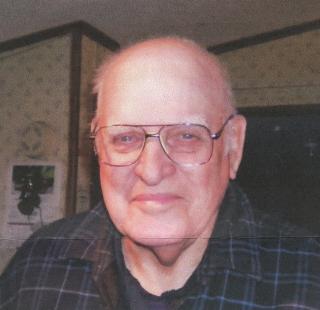Adolf Carlson
Era: World War II
Military Branch: Army

Adolf Carlson served in World War II in the Pacific Theater and in the Korean War.
He served in the U.S. Army. Mr. Carlson joined the Army on December 29, 1944. He was assigned to the 7th Infantry Division, 32nd Infantry Regiment, Fox Company, 1st Platoon. His unit was sent to Okinawa in anticipation of an invasion of Japan. The war ended the day before they arrived.
The regiment was redirected to Inchon Harbor, Korea. The unit was then sent to the 38th Parallel for guard duty; his platoon was assigned to the region of Yonan.
Mr. Carlson’s rank was Staff Sergeant.
He was discharged on November 26, 1946.
Source: Veterans’ Memorial Hall veteran history form; veteran’s account (below)
“I entered the Army on December 29, 1944. After basic training I was sent to Okinawa by ship as part of the 7th Division, 32nd Infantry Regiment, Fox Company, 1st Platoon, as a whole casualty company and for the invasion of Japan, but the war ended the day before we arrived. The regiment was then sent to Korea. I was in the first landing barge to land in the Inchon Harbor. From there, the regiment was sent to the 38th Parallel for guard duty. My platoon was at Yonan at the last post where we had to go through the Russian occupied area to get to Ongin Airport.
“I started as Acting Sergeant on November 20, 1945, and made Sergeant on January 19, 1946, and Staff Sergeant on March 6, 1946. When I was Staff Sergeant I was in charge of two outposts. At the Bengin post there was a demolition crew to dispose of 200-lb. and 500-lb. bombs. They put 15 tons of bombs in a blowout hole. Their sergeant had to be careful with the Japanese detonators, as you would only get to make one mistake.
“The sergeant was at the end of the clearing making dinner when it blew up. Six people were killed and only one was found, he had been sucked into the hold following the blast. He had been standing by the Jeep when the blast happened and was pretty shaken up by the experience. I called for two ambulance and a platform truck to the scene. They had to come 80 miles to get there. I was getting telephone calls for all the information that I could get for them. A chaplain came with them. The sergeant was the only survivor. This was this third group that had been killed disposing of the bombs. I had him sent back to Yonan to call regiment headquarters. He asked if he could be relieved of this duty, as he might not survive another detonation and he didn't have much time in his tour of duty.
“The platoon was to have R&R for 60 days. I remained at one outpost for two more weeks before I got to headquarters. Within a week, I was awakened by the Captain after duty as Sergeant of the Guard and told to pick any men from the company or use my own personnel to move the regiment across the river at Monson. There would be a lieutenant from Seoul to meet me. He didn't get there until the next day with the supplies we needed to set up before the regiment got there. This was supposed to be level ground but it was a steep hillside instead. While working on setting up headquarters, I got my left knee injured and went to the aid station in Seoul. There they sent me to the 25th Field Hospital, and the doctor put me on light duty instead of sending me home. I could only walk a short distance. I joined my platoon at Koranpore, then Injim, and back to Yonan. I then went to Ongin Airport and was there when my orders to go home came. I spent three weeks at company headquarters where I was on CQ duty and only get to bet about every three days. I was then shipped back to the U.S. for discharge.
“I believe that if President Truman hadn't ordered the drop of the atomic bomb there was a good chance that I wouldn't be here.
“The Stars and Stripes estimated over 1 million casualties on the invasion of Japan.”

